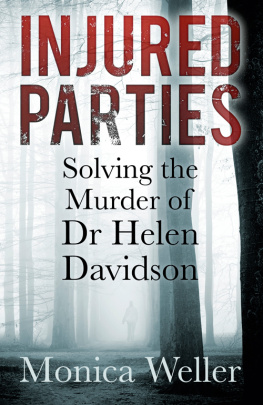
2010
Translated from the Japanese by Philip Gabriel
CHAPTER 1. WHO DID SHE WANT TO SEE?
Route 263 runs north and south some forty-eight kilometers, connecting Fukuoka and Saga Prefectures and straddling Mitsuse Pass in the Sefuri mountain range. The highway begins at the Arae intersection in Sawara Ward in Fukuoka City, an ordinary intersection in an area that, since the mid-1960s, has become a bedroom suburb of Fukuoka with a mushrooming of large and medium-size condos, including, on the east side, the massive Arae housing complex. Sawara Ward is also an educational hub, with three well-known universities- Fukuoka University, Seinan Gakuin, and Nakamura Gakuen-within a three-kilometer radius of the intersection. Perhaps because of all the students living in the vicinity, everyone you see walking at the intersection, or waiting for buses-even the elderly-seems young and full of life.
Known at this point as Sawara Avenue, Route 263 runs straight south. Down the avenue theres a Daiei department store, a Mos Burger fast-food restaurant, a 7-Eleven convenience store, and one of those big-box suburban chain bookstores with a massive sign that proclaims, in no-nonsense fashion, Books. The first convenience store has an entrance directly facing the street, but after the Noke intersection the next one has a small parking space for one or two cars, the store after that enough space for five or six, then one with a larger parking lot to accommodate up to ten cars. Past the Muromi River, the convenience stores are surrounded by parking lots that can accommodate several huge eighteen-wheelers, the stores themselves like small boxes almost lost in the midst of massive parking lots.
Here the road begins to gently rise, and just before Suga Shrine curves sharply to the right. There are fewer houses along the roadside; just the brand-new asphalt road and white guardrails leading up toward Mitsuse Pass.
Mitsuse Pass has always had ghostly, otherworldly stories connected to it. In the beginning of the Edo period it was rumored to be a hideout for robbers. In the mid-1920s rumor had it that someone murdered seven women in Kitagata township in Saga Prefecture and escaped to the pass. More recently the pass has become infamous as the place where, so the story goes, someone staying at a nearby inn went crazy and killed another guest. Aware of this tale, young people liked to dare each other to drive over the pass. There have been supposed sightings of ghosts as well, usually near the exit to the Mitsuse Tunnel on the border between Fukuoka and Saga.
The road through the tunnel, a toll road known as Echo Road, was built to bypass the sharp curves and slopes that slow down traffic in the winter. Construction was begun in 1979 and completed in 1986. The toll road costs 250 for passenger cars and 870 for larger vehicles, and truck drivers on the route between Nagasaki and Fukuoka, weighing the trade-off between time and cost, often choose to drive over the pass.
Taking the regular expressway from Nagasaki to Hakata, a part of Fukuoka City, costs 3,650 in tolls for a passenger car, one way, so including the toll for the tunnel, taking the pass road saves nearly 1,000. The downside, however, is the drive over an eerie road that, even in daytime, is covered with thick, overhanging trees. At night no matter how fast you drive it feels as if you are tottering over a mountain path with only a flashlight to guide you.
Even so, cars setting out from Nagasaki that take the pass road to save money take the Nagasaki Expressway from Nagasaki to Omura, then to Higashi-Sonogi and Takeo, and get off at the Saga Yamato interchange. Intersecting this east-west Nagasaki Expressway at the interchange is Route 263.
Despite its reputation, until January 6, 2002, Mitsuse Pass was merely a road over a mountain pass, one long overlooked once the expressway was built. For those who lived in the area it was nothing more than a mountain road on the border of the two prefectures with a mammoth tunnel that had cost upwards of five billion yen to complete. But in the beginning of January 2002, an uncommon snowfall lay on the land. There, among the countless networks of artery-like roads spread out over the country, Route 263 and the Nagasaki Expressway linking Nagasaki and Fukuoka suddenly stood out, like a blood vessel bulging near the skin.
On this day, a young construction worker living outside Nagasaki was arrested by the Nagasaki police. The crime? He was suspected of strangling Yoshino Ishibashi, an insurance saleswoman who lived in Fukuoka, and abandoning her body.

On December 9, 2001, Yoshio Ishibashi was standing outside his barbershop near the JR Kurume station. Though he usually had a few customers on a Sunday, no one had visited his shop all morning, so he went out in front, hoping to lure some in. Dressed in his white barbers smock, he gazed down the road, the cold north wind rushing past. An hour had passed since he had finished the lunch his wife, Satoko, had prepared, and the scent of curry lingered even outside.
From the front of the barbershop he could see the JR Kurume station in the distance. Two taxis were parked in the deserted square in front of the station, waiting for over an hour for customers. Whenever Yoshio saw this deserted square, he thought he would have more business if only his shop were located near the other railroad station in town, the private Nishitetsu Kurume station. These two railroad lines-one state owned, the other private-basically ran parallel from Kurume to Fukuoka City, but while the JR special express train cost 1,320 one way and took twenty-six minutes, the Nishitetsu express took forty-two minutes but cost only 600.
You either spend sixteen more minutes or 720, one or the other.
Every time Yoshio gazed out from his shop at the JR station, it struck him how people would so easily sell sixteen minutes of their time for 720. Not that this applied to everybody, of course. It was highly unlikely that another Ishibashi who lived in this town, the world-renowned founder of Bridgestone Tires, and his descendants, would sell their precious time for such small change. But there was only a handful of people like that in this town, and on a late Sunday afternoon at the end of the year, most people were like him. The Nishitetsu station might be a bit farther away, but when they wanted to go to Fukuoka, thats where they headed.
Once Yoshio calculated his own value based on the difference between the two stations. If you live to age seventy and your time is worth 720 per sixteen minutes, how much is a persons life worth? When he first saw the result on the calculator he was sure he had made a mistake. The bottom line was 1.6 billion. He hurriedly punched in the numbers again but came up with the same result. A persons life is worth 1.6 billion. My life, he thought, is worth 1.6 billion.
This might have been a meaningless figure, something hed calculated to kill time, but to Yoshio, the owner of a little barbershop whose customers were deserting him, the number gave a brief moment of happiness.
Yoshio had one child, a daughter named Yoshino, who had graduated the previous spring from junior college and had started working as a door-to-door salesperson for an insurance company in Fukuoka City. When she took the job, Yoshio had argued for a solid two weeks that she should continue to live at home, as shed done in college, and commute via the Nishitetsu line. Her job and their house were in the same prefecture, after all, and she shouldnt count on her salary, which was based mostly on commissions. Yoshino countered that her company gave its employees a housing allowance, and that if she lived at home it would interfere with work. So in the end she moved into an apartment building rented by her company, not far from her firm.
Next page











